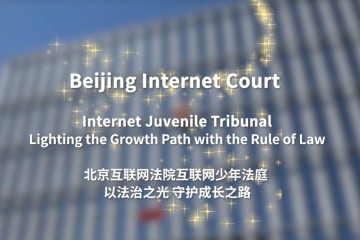BIC judge gives speech on image copyright protection
A forum on copyright commercial rights protection was hosted by China Copyright magazine under the guidance of the Copyright Protection Center of China.
Yi Ran, a judge from the Beijing Internet Court (BIC), was invited to have a keynote speech at the forum.
Yi's speech was about the phenomenon of "arbitrage" rights protection in image copyright infringement cases and its solution. The convenience of online litigation and the centralized jurisdiction of internet-related image copyright infringement cases have resulted in a clustering of this type of case to the three internet courts in Beijing, Hangzhou and Guangzhou.
He first summarized the features and causes of the internet-related image copyright infringement cases. According to him, the plaintiffs of this type of case are of a typical type and the infringement behavior is usually accumulated, but the defendants' attitudes vary and the place of litigation is selective.
There are three main causes for such cases, including the ambiguity of rights ownership increases the transaction cost, the way of online data access triggers a chain effect of infringement and the image copyright market is yet to function properly, he said.
According to a BIC research report, some picture rights holders take rights protection litigation as one of their business models and aim to profit from litigation. As of now,image copyright trading lacks market pricing and judicial pricing is standing for normal market behavior.
Based on current condition of internet-related image cases, Yi suggested to strengthen copyright protection from three aspects, including enhancing full chain protection by improving inter-departmental coordination in copyright creation, application, protection, management and service and strengthening law popularization and education to increase the public’s awareness of copyright protection. Judicial organs should give full play to the guiding function of judgment, achieving a balance between the public interest and innovation stimulation, he suggested.

 Judicial White Paper
Judicial White Paper
 Play
Play Play
Play Online Lawsuit Guide
Online Lawsuit Guide Beijing Internet Court Lawsuit Service WeChat Account
Beijing Internet Court Lawsuit Service WeChat Account  Beijing Internet Court WeChat Account
Beijing Internet Court WeChat Account